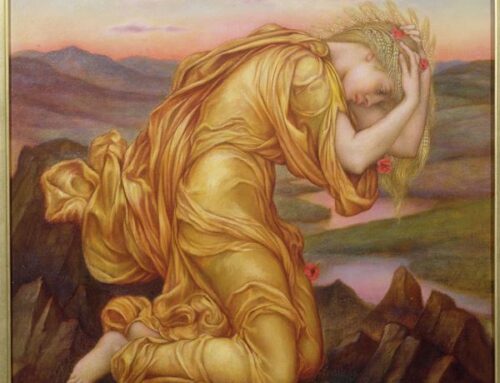On the weekend of the 22nd-23rd September 2012, the De Morgan Centre offered free entry as part of 2012’s Open House London weekend, a city-wide initiative that aims to grant the public access to buildings of architectural interest and get people exploring parts of London that they wouldn’t normally see.

Putney Lodge, circa 1860. Courtesy of Wandsworth Heritage Service
Although we are open to the public throughout the year, we decided that participating in Open House would be a perfect opportunity to let our visitors know all about the Longstaff Reading Room, the spectacular room that houses the collection. One of our willing volunteers dug deep and discovered the history of the building.
The site on which the museum building is now based was originally home to a late Georgian mansion called Putney Lodge, which belonged to Mr. Sigismund Rücker, a Wandsworth born businessman. After his death in 1882, Putney Lodge was purchased on behalf of the commissioners of Wandsworth Free Library. Local resident and philanthropist, Dr Longstaff was instrumental in the campaign to turn the building into the first public library in Wandsworth (the second only in London). The library opened in 1885 and proved to be so popular (initially it was common to receive over 1000 attendees at the weekends) that work on an extension commenced soon after.

Bust of Dr George Dixon Longstaff (1799-1892), on display in the Wandsworth Museum Café
Dr Longstaff led a long and industrious career as an academic and industrial chemist, working in Edinburgh, Glasgow, London and even America. He was a founding fellow of the Chemical Society of London and a strong believer in supporting both professionals and the public to undertake lifelong learning. In 1887, Dr Longstaff funded the building of the East wing extension (now home to the De Morgan Centre) in commemoration of Queen Victoria’s golden jubilee.
The first librarian gave the following description of the library:
“The Reference Reading Room is entered from the conservatory. This room is beautifully painted and gilded, a not disagreeable reminiscence of the former occupants of the house. There are three large mirrors and a white marble mantelpiece, over which is a clock, also a gift. On the walls are hung maps. Funds have not allowed of the erection of bookcases yet, but a Commissioner has kindly given one, and a bookcase from the old committee room has been placed here. On the first floor over the Lending Library and hall are two ladies’ rooms; these call for no further comment except that they are well patronised.”

The Longstaff Reading Room, circa 1890
The tile panel towards the front of the room (above the apse) recognises Dr Longstaff’s generous gift naming the space the Longstaff Reading Room, 1837-1887. This panel was funded by the Wandsworth Book Club. The brass plaque above the door funded by the rest of the library commissioners is inscribed as follows:
“This Reading Room was presented to the parish of Wandsworth in H.M. Queen Victoria’s Jubilee Year, by George Dixon Longstaff, M.D. First Chairman of the Library Commissioners, during the 50th year of his residence in the parish and the 88th of his age.”
The extension was built of white bricks with white stone dressings. The room is ambitious in scale; 70 feet long, 25 feet wide, and 26 feet to the apex of the roof. The beautiful timber ceiling is pine and was originally stained two colours. The walls were terracotta in colour and with the ivory white cornice and Corinthian pilasters it was a warm and welcoming space. At the end of the room nearest to West Hill there is a semi-circular apse set with five large windows, and the rest of the room was illuminated by ten further windows (now covered by the Centre’s blue panels). Artificial light was originally supplied by five pendant self-ventilating Wenham gas lamps. The heating was (and still is) provided by floor level hot water pipes and the flooring (now covered by carpet) is of wood blocks embedded in pitch laid on concrete.

Wandsworth Free Library, with East Wing extension, circa 1890. Courtesy of Wandsworth Heritage Service
The Lodge building remained as part of the library until it was rebuilt in the late 1930s in a style sympathetic to the East Wing, which retained its stunning Arts and Crafts interior. The Longstaff Reading Room was built in the same year William and Evelyn De Morgan were married – entirely a coincidence, but a fun bit of trivia we like to mention during group visits and talks!
It’s easy enough to get distracted by the incredible works of William and Evelyn, but as you can see, the building that houses the Centre has a fascinating history all of its own. So next time you visit, be sure to look up!
Emma Coleman, Museum Officer






